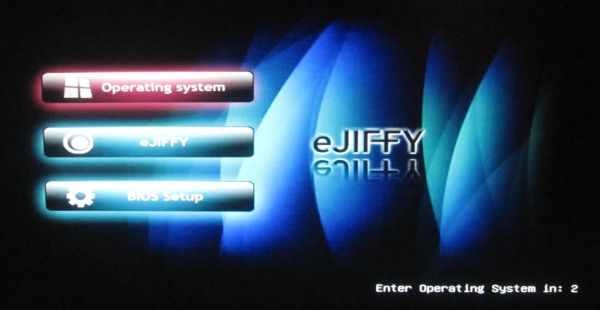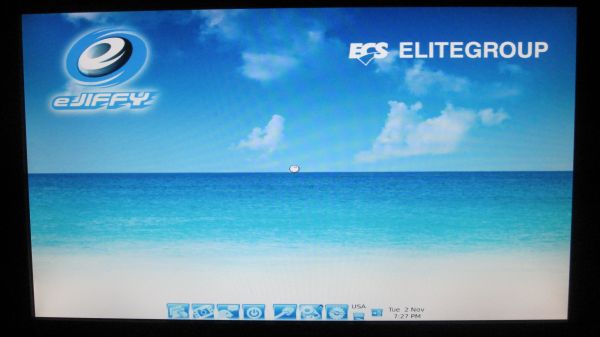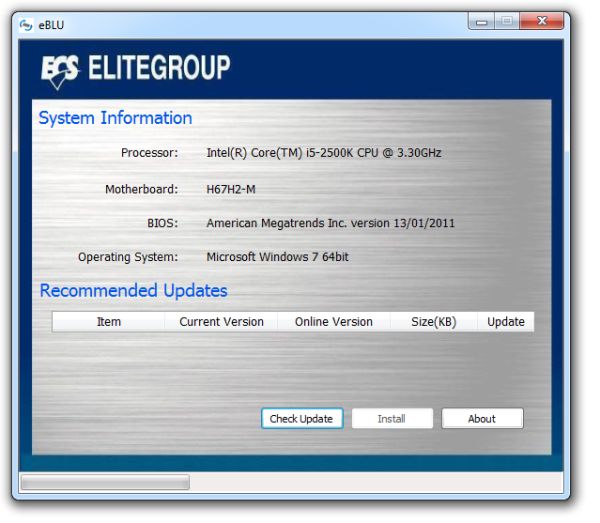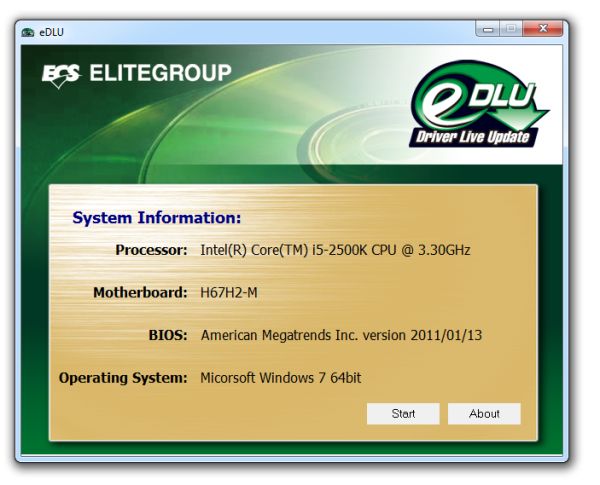H67 – A Triumvirate of Tantalizing Technology
by Ian Cutress on March 27, 2011 6:25 PM EST- Posted in
- Motherboards
- Sandy Bridge
- H67
Board Features
| Market Segment | Performance H67 |
| CPU Interface | LGA 1155 |
| CPU Support | I3/i5/i7 Sandy Bridge |
| Chipset | H67 |
| Base Clock Frequency | 100 MHz |
| DDR3 Memory Speed | 1333 MHz, CL8 8-8-24 |
| Core Voltage | Default, +20 mV to +320 mV offset in 20 mV increments |
| CPU Clock Multiplier | Dependant on CPU |
| DRAM Voltage | Default, -800mV to 630mV offset |
| DRAM Command Rate | Auto, 1T, 2T |
| Memory Slots |
Four 240-pin DDR3 DIMM slots in dual-channel Regular unbuffered DD3 memory Up to 32GB total supported |
| Expansion Slots |
1 x PCI Express 2.0 x16 slot 2 x PCI Express 2.0 x1 slots 1 x PCI slot |
| Onboard SATA/RAID |
2 x SATA 6 Gb/s ports (grey) 3 x SATA 3 Gb/s ports (white) 1 x eSATA 3 Gb/s port |
| Onboard |
2 x SATA 6 Gb/s ports 3 x SATA 3 Gb/s ports 1 x TPM Header 1 x Onboard buzzer 1 x Power button 1 x Reset button Debug LED 1 x S/PDIF Out header 4 x USB 2 connectors support additional 8 USB ports Front panel audio connector 1 x Clear CMOS header |
| Onboard LAN | Dual Realtek RTL8111E Gigabit Fast Ethernet Controllers with Teaming |
| Onboard Audio | Realtek® ALC892 8-Channel HD Audio |
| Power Connectors |
24-pin EATX Power connector 8-pin EATX 12V Power connector |
| Fan Headers |
1 x CPU Fan connector (4-pin) 1 x System Fan connector (4-pin) 1 x Chassis Fan connector (3-pin) |
| I/O Panel |
2 x USB 3.0 ports 4 x USB 2.0 Ports 1 x D-Sub 1 x HDMI Port 1 x DVI Port 1 x Display port 2 x RJ45 LAN connectors 1 x Audio port (Line-in,4x Line-out, SPDIF out) 1 x Clear_CMOS button 1 x eSATA 3Gb/s port |
| BIOS | 03/02/2011 |
An interesting feature on the board is the dual gigabit Ethernet, which supports Teaming, whereby with two cables, the motherboard can utilize both ports for a combined input and output. Unfortunately, the only way that this is relevant to most end users is if the ECS is the bottleneck and you have a 10 Gbit network with a 10 Gbit send/receive source. In that context, the ECS board will hit a peak of 2 Gb/s. The other alternative is to connect the board to two separate networks.
In The Box
- I/O Shield
- 4 Locking SATA cables
- 1 eSATA bracket
The addition of 4 locking SATA cables is definitely welcome. They are not angled, but that entirely depends on the individual case and hard-drive setup. This isn’t as much as what is included with the ASRock board, but similar to the Gigabyte.
Software

The installation CD supplied with the motherboard is fairly easy to navigate – one click on the setup section applies all the drivers related to the motherboard. Though in Windows, I was getting a screen saying ‘Windows can’t verify the publisher of this driver software’, meaning I had to click ‘Install this driver software anyway’ around 10 times.
The main software packaged on the CD is eJiffy, a quick bootable Linux package, eBLU (easy BIOS Live Update), eDLU (easy Driver Live Update), and eSF, the smart fan utility. While these utilities do not go as far as other vendors offerings in terms of complexity, they are simple, quick, and easy to use.
eJiffy
eJiffy is a neat little tool that provides an alternative boot option at startup. Rather than loading the main windows OS, it provides a menu with an 8 second timer giving the option to load into Windows, to load into eJiffy, or easy access into the BIOS.
When selecting the eJiffy option, you are greeted by a very fast booting front end with two main options – an internet browser called eWeb, and simple messaging software called ePal. The internet browser, presumably based on Mozilla, had no problems with flash heavy websites, and seemed as fast as how I find Chrome 10 in Windows.
I quite like this software – easy to use and provides a quick interface to look things up on the web.
eBLU
The BIOS Live Update utility connects to an ECS server to search if a newer BIOS version is available, and then happily installs it in the OS. It also checks itself for newer versions of eBLU online, which is good.
eDLU
The Driver Live Update option does not directly compare the drivers currently installed on the system to their up-to-date counterparts on the ECS website, but take you straight to the download section for the motherboard on the ECS website. A direct driver to server version comparison tool would be a big boost to this board, but unfortunately, this is not it.
eSF
.png)
The Smart Fan utility for the board seems fairly good, until you realize that it only controls one fan header on the board.















56 Comments
View All Comments
DominionSeraph - Monday, March 28, 2011 - link
Did you know that the laptop that is a college student's constant campus accessory is.. get this.. a computer?This isn't 1980. A laptop's a given either way.
Wilberwind - Sunday, March 27, 2011 - link
oh noes...that Console vs. PC debate again...Consoles are great for playing with friends. I have both, but If you're using a PC for work and internet, why not just spend a little more and make it into a cheap gaming rig?dingetje - Sunday, March 27, 2011 - link
consoles are great...for retarded kidssilverblue - Monday, March 28, 2011 - link
Just because someone chooses to play games on a console, doesn't make them retarded. You spent more money for a machine that will be utilised far less than theirs and doesn't lend itself as well to communal entertainment, but I'm not going to judge you or anyone else for whatever gaming option they've opted for.silverblue - Monday, March 28, 2011 - link
"utilised" i.e. the developers will generally program consoles to their strengths, whereas you have to hope the developers pay even half the attention to even one component in yours, be it CPU or GPU. Nothing's perfect, however for all the downsides of having a locked system, the ability to develop for only one or two permutations of hardware allows a studio to work at ekeing out every last amount of power from a supposedly limited machine.Voldenuit - Sunday, March 27, 2011 - link
Intel's hare-brained chipset segmentation strategies = failsauce.Taft12 - Monday, March 28, 2011 - link
... and don't forget -- preventing others from producing competing chipsets = monopolyabusesaucemariush - Sunday, March 27, 2011 - link
Page 8:Along the bottom are a plethora of USB headers, but no fan headers. In fact, this board is somewhat lacking USB headers – there is one for the CPU, which is oddly south of the CPU socket, and another next to the SATA ports. Trying to fit a Corsair H50 required some deft placing of the cooler or a fan extension lead, and the second fan required a 3-pin to molex connector.
Surely you mean "this board is somewhat lacking FAN headers", or it doesn't really make sense
KaarlisK - Sunday, March 27, 2011 - link
Does the power consumption at idle increase when overclocking the GPU?If the overclock affects the turbo frequency, it should not change. If the overclock changes the base frequency, I have no idea.
Concillian - Monday, March 28, 2011 - link
I really do not understand Intel's target with the H67.H61 is for the budget person + single GPU
P67 is for the overclocker with plenty of money to donate on a motherboard almost $!00 more expensive plus a CPU that has a price adder as well.
H67 is for the IGP overclocker? Wha?
The review is fine, but the products reviewed have no real target market in my mind. It's a marketing stunt that I'm surprised Anandtech didn't call them on by including an H61 motherboard here and pointing out that the real value, if there is one in this Intel generation, is H61.